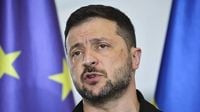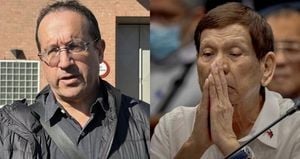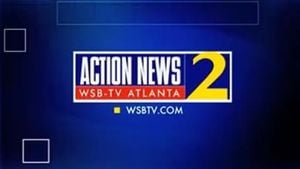On Monday, August 18, 2025, the world’s attention will turn to Washington, D.C., where Ukrainian President Volodymyr Zelenskyy will sit down for high-stakes talks with U.S. President Donald Trump. But this isn’t a solo mission for Zelenskyy—he’ll be flanked by an impressive contingent of European leaders, all determined to present a united front in the ongoing struggle to end Russia’s 3 1/2-year war against Ukraine and to secure robust security guarantees for Kyiv’s future.
In a rare display of cross-continental unity, leaders from Britain, France, Germany, Italy, Finland, and top officials from NATO and the European Commission will join Zelenskyy at the White House. According to the Associated Press, this coordinated show of support comes just days after Zelenskyy was left out of Trump’s summit with Russian President Vladimir Putin in Alaska—a move that raised eyebrows in Kyiv and across European capitals.
The stakes could hardly be higher. The Alaska summit yielded a surprise: U.S. special envoy Steve Witkoff told CNN that Putin, for the first time, signaled openness to allowing the U.S. and its European allies to provide Ukraine with security guarantees similar to NATO’s famed Article 5, which treats an attack on one as an attack on all. Witkoff called this development “game-changing.”
But the details remain fuzzy, and that ambiguity is precisely why so many European heads of state are making the trek to Washington. French President Emmanuel Macron, speaking after a nearly two-hour video call with leaders from the “coalition of the willing”—including Canada, Australia, and Japan—said the European delegation will press Trump to back a comprehensive plan to strengthen Ukraine’s military. “We need a credible format for the Ukrainian army, that’s the first point, and say—we Europeans and Americans—how we’ll train them, equip them, and finance this effort in the long-term,” Macron explained.
The European proposal goes beyond just promises on paper. Macron outlined a vision for an allied force stationed in Ukraine (though away from the front lines) as a tangible deterrent to further Russian aggression. “Several thousand men on the ground in Ukraine in the zone of peace would signal that our fates are linked,” he said, emphasizing the need for substance over mere symbolism. “A theoretical article isn’t enough, the question is one of substance. The first of the security guarantees for Ukraine is a strong Ukrainian army.”
European Commission President Ursula von der Leyen echoed this sentiment at a press conference in Brussels alongside Zelenskyy. She praised Trump’s “willingness to contribute to Article 5-like security guarantees for Ukraine,” but also reminded everyone that “the work of defending Europe is first and foremost our responsibility.” Von der Leyen reaffirmed the European Union’s pledge to support Ukraine’s path toward EU membership and warned that the bloc stands ready to implement a 19th sanctions package against Russia if the Kremlin refuses to halt its aggression.
Monday’s gathering promises to be a diplomatic marathon. Alongside Macron and von der Leyen, the roster includes British Prime Minister Keir Starmer, German Chancellor Friedrich Merz, Italian Prime Minister Giorgia Meloni, Finnish President Alexander Stubb, and NATO Secretary General Mark Rutte. Each brings a unique perspective—and, in some cases, billions of euros in military support. For instance, Germany announced in May it would provide approximately €5 billion in military aid to Ukraine, a move recently lauded by Rutte for enabling “a massive supply” of weapons for Kyiv.
Yet, the unity on display masks significant challenges. The February 2025 Oval Office meeting between Trump and Zelenskyy devolved into a heated argument, with Trump and Vice President Vance accusing Zelenskyy of disrespect. Memories of that confrontation linger, fueling European fears that Zelenskyy could be pressured into an unfavorable deal or, worse, sidelined in negotiations with Moscow. Retired French Gen. Dominique Trinquand told the Associated Press, “The Europeans are very afraid of the Oval Office scene being repeated and so they want to support Mr. Zelenskyy to the hilt. It’s a power struggle and a position of strength that might work with Trump.”
U.S. Secretary of State Marco Rubio attempted to tamp down speculation that the European officials are there to keep Zelenskyy from being bullied. On CBS News’ “Face the Nation,” Rubio insisted, “The best way to end the war would be through a full peace deal,” though he didn’t rule out a ceasefire as an interim step.
For Zelenskyy, security guarantees are non-negotiable. After a phone call with Trump and NATO leaders following the Alaska summit, Zelenskyy asserted that European involvement is crucial “at every stage to ensure reliable security guarantees together with America.” He’s been clear that those guarantees must “work in practice,” mirroring NATO’s Article 5, and that Ukraine’s own military strength, financed and equipped by Europe and the U.S., is the cornerstone of any effective defense.
But what about the thorny issue of territory? After his meeting with Putin, Trump publicly urged Kyiv to accept a deal that would require ceding key Ukrainian territory to Russia. “Russia is a very big power, and they’re not,” Trump remarked bluntly. Zelenskyy, for his part, has flatly rejected any proposal to surrender land. “Since the territorial issue is so important, it should be discussed only by the leaders of Ukraine and Russia at the trilateral Ukraine, United States, Russia,” he told reporters in Brussels. “So far, Russia has given no sign that the trilateral will happen.”
The presence of so many European leaders is meant to ensure that Ukraine isn’t forced into a corner. As Neil Melvin of the Royal United Services Institute put it to the Associated Press, “The risk is they look heavy-handed and are ganging up on Trump. Trump won’t want to be put in a corner.” Still, the hope is that a collective approach will prevent contradictory messages and keep Kyiv’s interests front and center.
Each leader brings their own priorities and domestic pressures. Italian Prime Minister Giorgia Meloni, for example, has called the latest diplomatic push a “glimmer of hope” and pledged that Italy is prepared to do its part. Finnish President Alexander Stubb, who has developed a rapport with Trump, described the joint effort as Europe and the U.S. “further strengthening their common position.” British Prime Minister Keir Starmer stressed, “The path to peace in Ukraine cannot be decided without him [Zelenskyy].”
As talks get underway in Washington, the world will be watching to see if this unprecedented lineup of leaders can break the deadlock—or at least keep Ukraine from being left out in the cold. Zelenskyy, for his part, remains adamant: “A security guarantee is a strong army. Only Ukraine can provide that. Only Europe can finance this army, and weapons for this army can be provided by our domestic production and European production. But there are certain things that are in short supply and are only available in the United States.”
With so much at stake and so many powerful voices in the room, Monday’s meeting could set the course for Ukraine’s future—and perhaps for the security of Europe itself.





